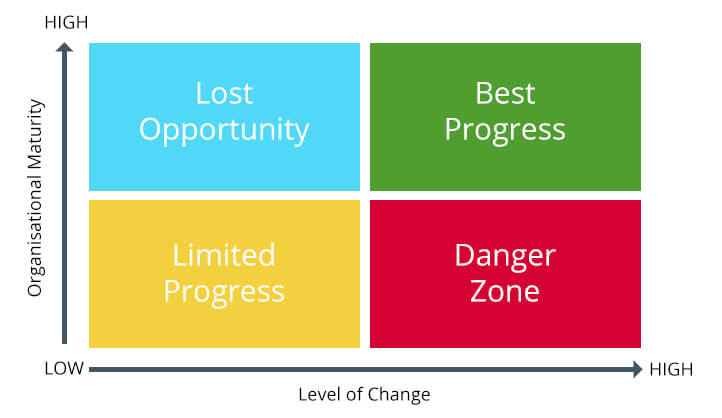In the first blog on this topic, I described the origins and background to lean manufacturing. In the second blog – lean manufacturing journey, the key activities of the model described in the book entitled “Lean Thinking” were introduced. While this is seen as the most popular model, there are a few reservations about it. These will be covered as we progress.
Let’s Start Talking – Change Management
One of the most critical activities in any initiative is that of Change Management. Change Management can be described as a collection of approaches to prepare, support and help individuals, teams, and organizations in making organizational change, as well as sustain the change.
Most organizations have a “Lean Temple”, but very few of them have a significant portion of their temple allocated to the people aspect of the change they are wanting to bring into the organization. Looking at the Toyota Lean Temple, we do not see the people aspect focusing specifically on culture change.
Toyota has instead built these processes into their 5S program which is used as a change management approach, but has their 4P’s program picking up most of the people-related issues and behaviors. The 4P’s – Philosophy, People, Processes and Problem Solving – are a guide to how the company operates and in turn, how the employee should behave to support this.
This is communicated extensively and regularly to new and longer-term employees. Communication becomes the key to any change – often the rumor mill will thwart any change because it is opinion and negativity, not company managed.
Understanding Failure
It is always a good idea to understand where the organization is on its journey to be the best.
The simple model compares the organizational maturity to the level of change, giving a guide to the compatibility of the organization with the proposed change, or a “change fit”. The critical factor is to be within the level that the organization can accommodate. The lower the organizational maturity, the lower the level of change that it can successfully cope with. Too high a level of change and you move into the “Danger Zone” where the initiative will fail for multiple reasons.

Change Management allows us to change the size of the levels, especially the “Danger Zone” which we want to reduce to as small as possible, or even eliminate. It will also allow us to move an organization into the green and speed up progress.
Forcing change at unsustainable rates will result in failure and sabotage.
The most important part of this model is that each organization has a unique culture, with its own boundaries which need to be identified and navigated. Management need to recognize this, and understand what can be achieved as a realistic target in the given time frames.
It is often better to start off a bit slower to teach the organization how to win, and then build on the successes and the confidence and push onto the bigger changes.
As discussed before, just copying another organization will not necessarily address your organizational issues. You need your own unique model that suits your organization. There are a lot of business models all covering similar issues, but the organization needs to identify and use models that address its own challenges.







